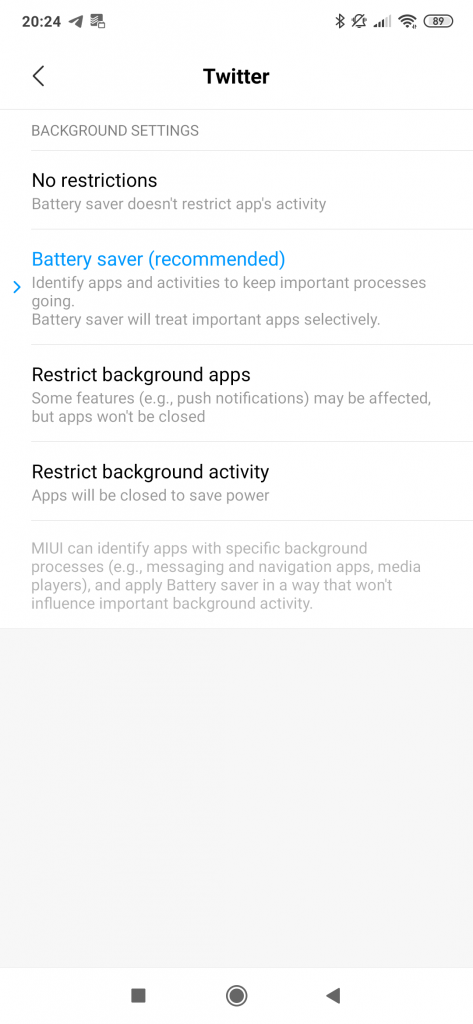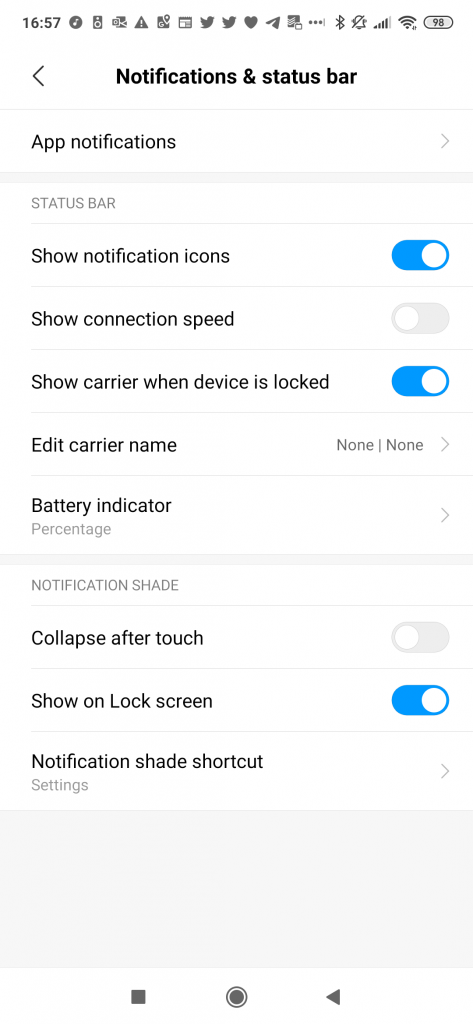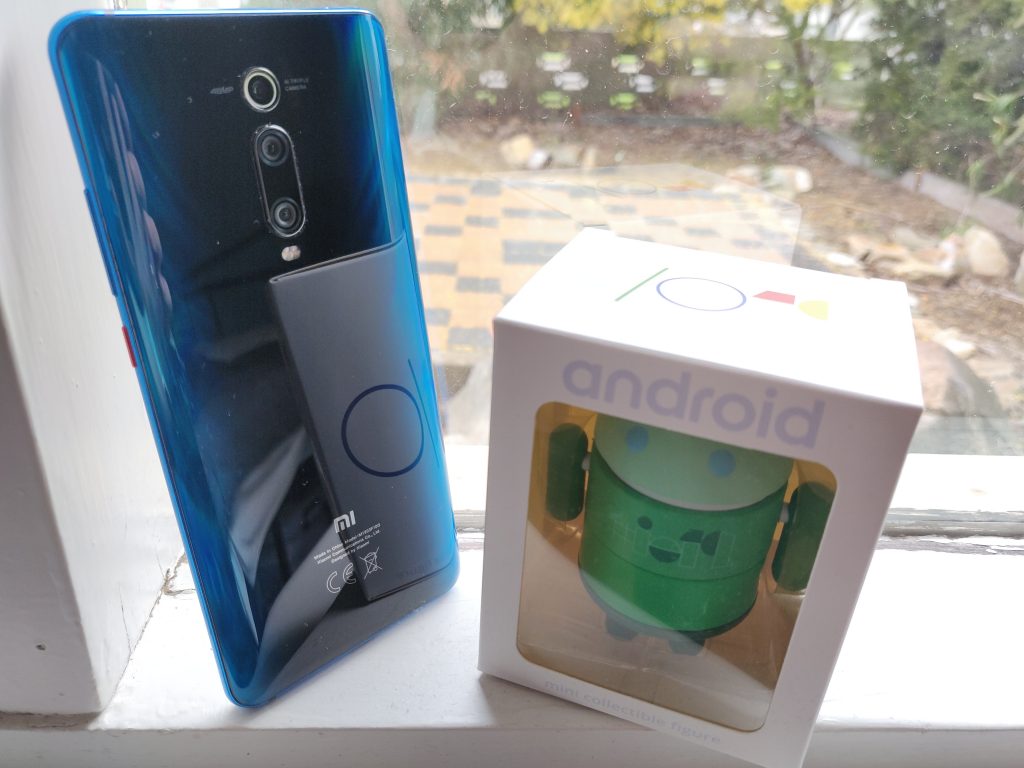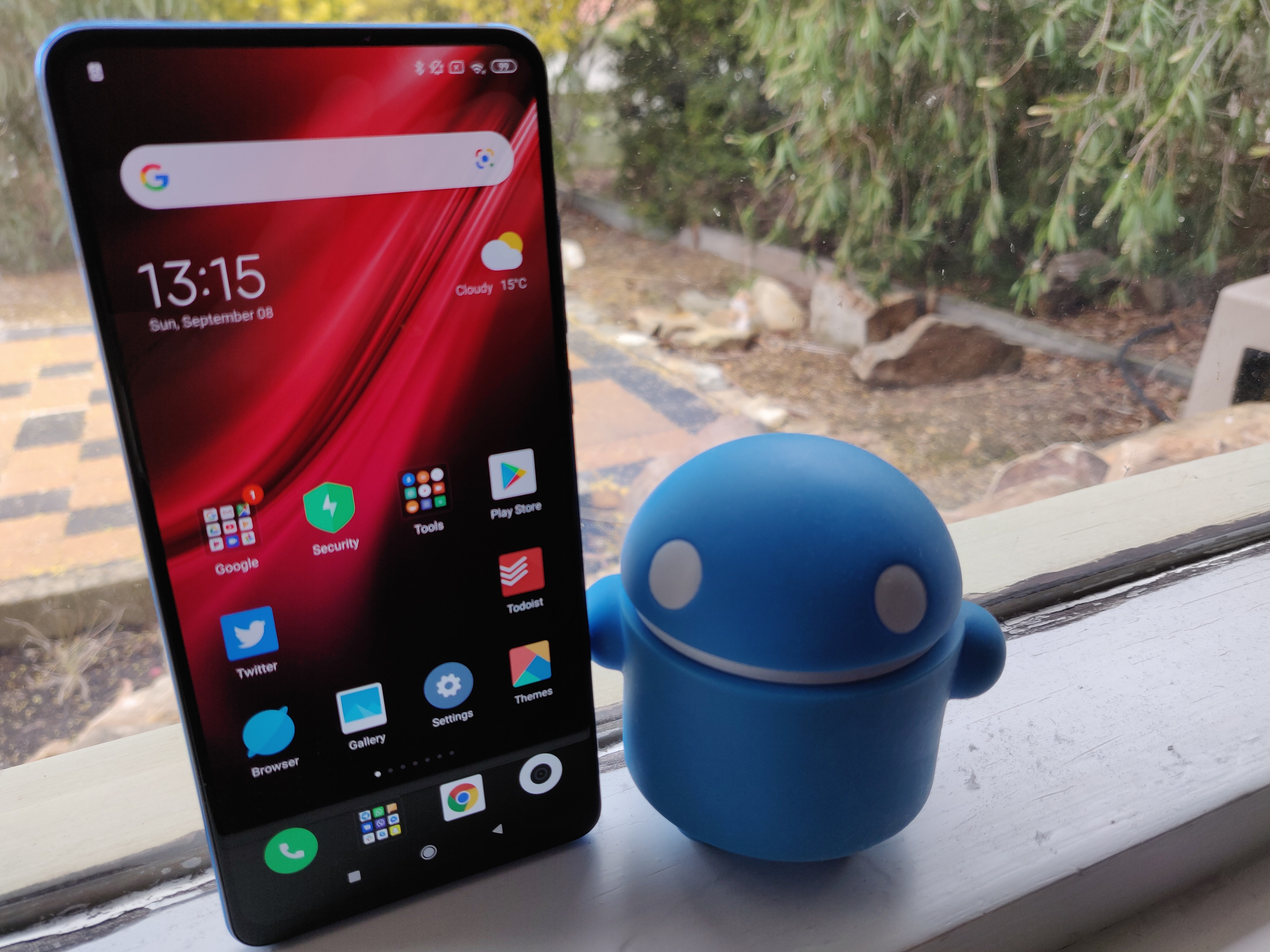Xiaomi has been around for a while now, and has recently pushed into the Australian market, delivering devices at a very affordable price point, and I’m really happy that this is the case. The recent addition of the Mi 9T to Xiaomi’s Australian product list makes it a very interesting and quite compelling option for AUD $649.00 at the Mi Store (at the time of writing this) or $699 at JB Hi-Fi.
At that price, you might think that it’s a lower-mid range phone, but in truth it’s not really – I was really pleasantly surprised by the capabilities of the Mi 9T. The general performance is reliable, the presentation is delightful and the camera is quite the surprise.
What’s inside?
The Xiaomi Mi 9T is a far more impressive device than the specs and price would suggest. The overall feeling is very good; I like the shape of the device and the quality of experience that this combination of factors produced.
| Key Specifications: | Xiaomi Mi 9T |
|---|---|
| Release date | June 2019 |
| Screen size | 6.39-inch |
| Screen technology | AMOLED |
| Resolution | 2,340 x 1,080 |
| PPI | 403 |
| Rear camera |
|
| Rear aperture |
|
| Front camera | 20MP |
| Front aperture | f/2.2 |
| Chipset | Snapdragon 730 |
| Core config |
|
| RAM | 6GB |
| Storage |
|
| MicroSD | No |
| Battery | 4,000 mAh |
| Battery removable | — |
| Connector | USB C |
| Headphone Port | Yes |
| Headphone Location | — |
| Speaker Configuration | — |
| WIFI standards | 802.11 a/b/g/n/ac |
| Bluetooth standards |
|
| NFC | Yes |
| Location |
|
| Android OS | Android 9.0 |
| Vendor skin | MIUI 10 |
| Dimensions | 56.7 x 74.3 x 8.8 mm |
| Weight | 191g |
| Colours |
|
The phone has a 6.39-inch Gorilla Glass 5 screen running 1080p (1080 x 2340 resolution) at 403ppi. It’s gorgeous and gives a very easy on the eyes viewable area. The screen has great brightness range too, and the software is well optimised to automatically adjust to your environment
Physically the unit measures 156.7 x 74.3 x 8.8 mm which is slightly larger than the Pixel 3a, slightly smaller than the Pixel 3XL and feels to ride the middle ground in size and it feels solid without being really heavy.
Flip it over and you’ve got a really striking coloured rear of the device if you’ve chosen the flame red or glacier blue. If you’ve chosen the more mainstream option, you’ll be looking at carbon black, not a bad look but not as spectacular as the others.
When it comes to performance and connectivity the Mi 9T has some acceptable – but not super sharp – specs to consider. The basics that most users want to know about are the Snapdragon 730, Adreno 618 and 6GB of memory. There are two models in terms of storage, but through official channels at this time there’s only the 128GB available in Australia.
The Xiaomi Mi 9T has the full range of connectivity you’d expect from a modern phone, even high end models including NFC.
Everything else you’d expect to be in there, is there. Full range Wi-Fi 802.11 a/b/g/n/ac, Bluetooth 5.0 with A2DP, a fingerprint reader (under screen) and it charges through USB C. Perhaps the biggest surprise here are the FM Radio and a headphone jack, it does go hand in hand as the FM radio uses the headphone jack (more specifically wire from your headphones) as an antenna. Big thanks to former Ausdroid writer Jamie who noted that you can in fact use a headphone jack stub with wire soldered to it as an antenna, then listen through your Bluetooth headphones.
The battery is 4000 mAh which I found capable of handling even my biggest days on the phone with a lot of screen on time. Most days I was getting to bed time with other 40% battery left, even on a day where my OnePlus 6T would be down to single digits I had over 15% left. On the off chance you do manage to destroy the battery, it’s got 18W fast charging. The upshot of the fast charging is 15 minutes charging will give you several hours of intensive screen on time and calls. While it was a little inconsistent, to quantify what I was seeing, during short bursts of charging about 3% battery was added for every 5 minutes of charging.
It does run Android 9.0 out of the box, but unfortunately there’s a few places where Xiaomi have not quite met the challenge.
The Software… MIUI isn’t for everyone
MIUI 10 is an interesting beast. I know it’s focussed on overseas markets and it’s in part at least, modelled around iOS but I struggle with it.
There’s a few issues that I have with the behaviour of MIUI. It breaks away from having a swipe up access to all of your apps, moving to a multiple home screen with apps everywhere. While you can filter them into folders and arrange them in any order you choose, by default they’re set out in the order that you installed your apps which can make them very hard to find.
I also found the need to press the back buttons to get to your primary home screen felt clumsy. There is some customisation to the behaviour you can make, but the other thing to keep in mind as a user is whether a custom launcher like Nova Prime or Action Launcher are worth investing in to get the hardware you want. If the look of your phone software is critical to you, the built-in theme store is pretty good and you should be able to find a Pixel theme in there to satisfy your taste.

That’s all nit picking based mainly on my preferred behaviours from a phone. In terms of genuine problems with the software there were a few bits to gripe about too. There’s a couple areas I’d like to talk about, starting with the bloat.
There’s a huge amount of those “useful” apps and customised apps on here when you get the device. Cleaner, Mi Video, Music, File Manager, Themes for MIUI, Compass, download manager, Scanner and a Security scanning app. That’s a lot of bloat that a lot of users just aren’t going to use. There is a very noticeable issue with the built in file cleaning app too. If you clear all recommended files it will disconnect from any paired Bluetooth smartwatch.
Google’s smart lock feature does not work with this phone which means you can’t keep the phone unlocked with a Bluetooth device unless its a Xiaomi device like a Mi Band 3. Even when you do pair it with a Mi Band and swipe up on the lock screen the front facing camera still pops up whilst showing a notification that the device is unlocked by Bluetooth device.
There are some minor bugs with notifications on the lock screen. Where the text overlaps on text messages and the software does feel a bit like beta software at times, it works but is missing a bit of the polish you expect from a product generally available to the public..
One area that was either very good or very bad with no clear reason why is the camera software. A number of times I had a “Error, unable to open app” when I was trying to open the camera. When it works, it’s great – but a failure to load the app is an inconvenience few users would accept.
Aggressive task management is a positive if you like long battery life which the Mi 9T delivers. The problem is that some apps need to run in the background for a variety of reasons. Whether that’s for real-time notifications, monitoring of systems or messaging. I found that the default settings were a bit too aggressive for some of the apps I use regularly and need running. There is an easy fix, simply add an exception to the power settings for that individual app so that either:
- No power restrictions are in place
- Power saving kicks in automatically by the system
- Power saving kicks in very aggressively
- Restricted background apps allowed, but push notifications may be affected

Finally, I want to take a look at notifications. Actually I’d love to see my notifications, but Xiaomi have decided that I don’t need them by default. In much the same way Oppo had some issues in trying to be too much like iOS, I fear Xiaomi is following the same pathway. Honestly, the hardware is good – just put stock Android on (or stop trying to be more iOS like) and be done with it. Let the really good hardware and very affordable pricing speak for itself.
Thankfully there is an option in the settings to turn on the notification icons. Personally, I can’t help but feel that on by default would have been a better decision.
A look at the camera

Yay, no notch and a super slim bezel makes this rather spectacular. There’s a rather cool way Xiaomi got around this, a popup selfie camera. The lack of notch isn’t just a cosmetic change, it’s also very useful for displaying the stupid volume of notifications that can build up at times.
The specs of the main camera array is really good. There’s 3 cameras in the rear facing setup:
- 48 MP, f/1.8, 26mm (wide), 1/2″, 0.8µm, PDAF
- 8 MP, f/2.4, 53mm (telephoto), 1/4″, 1.12µm, PDAF, 2x optical zoom
- 13 MP, f/2.4, 12mm (ultrawide), 1/3″, 1.12µm
The Mi 9T camera is really capable across a broad set of environments and lighting conditions. The picture quality that it produces through the very wide ranging settings is excellent with really good colour reproduction. Possibly the biggest issue I’ve found is that some facial features are smoothed over or washed out by the post capture processing. This isn’t unusual in the mobile camera market, it’s just something I’m not particularly enamoured of.
Night Mode: I’ll let you judge for yourself. It takes really good shots without the need for a tripod or other stabilisation, just grab your phone – set to night mode and hit the go button. More noticeable on night mode, but the camera is slow to process photos at times. While it’s doing this, you’re unable to switch camera modes.
The selfie camera is a pop up 20MP, f/2.2 which produces some impressive photos even in relatively low light and much like the rear facing cameras, there’s a great range of options to explore and further your mobile photography.
The software is very easy to navigate, offering quick capture from button press to image capture so you’re far more likely to get a good photo of what you see on the screen when you hit the button. It’s also very good for those who want to vlog, the higher quality selfie camera makes capturing decent quality video far easier than it would be otherwise. The main camera setup and the selfie camera capabilities are a really welcome and add a huge amount of value to a very affordable phone.
What’s it good at?
The specs aren’t spectacular, but they’re at the sharper end of the mid-range of devices. The affordable price tag gives a bit of a false impression of its capabilities too, particularly the camera which we’ve outlined above. The camera has some fantastic capacity, particularly in low light conditions.
The battery life for a device that isn’t marketed on having outstanding battery is, well… outstanding! The combinations of factors leaves the Mi 9T looking pretty darn good and with a wide open market available to it – particularly since the phone is selling through mass market retailers like JB Hi-Fi.
The performance of the phone is really reliable. I didn’t experience any last or other issues that suggested performance problems or lack of software optimisation. I’m also really happy to say that it comes with Android 9, the phone also got the July 2019 security update as soon as I connected to WiFi which is promising.
Although we don’t have any confirmation in writing that the version will be updated, we’ve reached out to get something confirmed one way or the other.
What’s it not as good at?
This is honestly a really solid entry to the mid range market from Xiaomi. With that, Most of the criticisms I have are more about my preference than actual obvious issues with the phone.
I find MIUI’s user interface a bit jarring, and users of other Android devices are likely to find it a bit ‘iPhone’ ish. Much of this comment is aimed at the launcher, which fortunately can be replaced with something a little more traditional.

The decision to have notification icons off by default is just strange in my eyes. It’s something users expect, I don’t know anyone who would turn them off. So I’m not sure why the option exists, and even accepting it does, I can’t see why it would be off by default.
Who should buy one?
If you shop around, you’ll probably find the Mi 9T starting at about the $440 mark for the 64GB model and through to $649 on the Mi-Store for the 128GB model. The pricing is pretty attractive, particularly when compared to the Note 10, S10, latest batch of Pixel’s or even Huawei devices that cost north of the $1k mark.
It feels like Xiaomi have moved past trying to prove that they can produce good phones with cute little concepts and have just delivered one. What a delivery it is too!

The battery is really impressive for such a slim device, at no stage did I feel at risk of running out of battery towards the end of the day. Even on my biggest of usage days with huge amounts of screen on time I was plugging in double digit percentage remaining. If you’re heading out late partying, a quick 20 or 30 minute top up will almost certainly see you through the night due to the speed that fast charging brings the battery back to life.
The camera in the Mi 9T is going to out-shoot any phone that’s more than about 12 – 15 months old, technology is progressing in this realm very well. The end product is images that are looking amazing, particularly in low light conditions when
I’m not a huge fan of MIUI, it’s easy to replace much of that behaviour that I find frustrating with a third party launcher. The presentation of the device is gorgeous, I can’t overstate this enough. So many phones these days are flat black or silver – to have the coloured veins through the glacier blue and flame red colours is stunning. A quick note that it does come with a black hard case in the box but it won’t allow you to show off that stunning back and offers little drop protection.
It’s not the quickest phone I’ve used recently, but the performance consistent and reliable. Most users aren’t going to see any issue at all with the device and its responsiveness, 6GB of RAM has become the norm and it provides a far more usable device and better experience overall.

Who should buy?
- Someone after a feature-packed phone without paying for a premium-price.
- Anyone after a good phone with good performance and sharp pricing.
- If you’re contemplating a OnePlus but want something you can buy in Australia.
If any of the above sound like you, then Xiaomis Mi 9T might be the right choice for you.







































“release a mid range Android One version of their phones sooner than later.” JB HI FI is selling the Mi A3 for $499
It doesn’t have a notchless design though and has a 665 snapdragon vs the 9T snapdragon
It’s worth noting all the flaws in MIUI can be solved by flashing a custom ROM! While not for everyone, I am now running LineageOS, and it truly unlocks the potential of the device. Stock Android vs MIUI is like night and day, and I can truly say this is one of the best phones on the market right now, for an insanely good value price, if you take the time to flash the ROM. Check out xda-developers for more info.
One thing you didn’t mention is gaming performance. In other reviews, I have seen they feel that while the GPU is not as fast as with the 855 because of the lower screen resolution in the flagships games, in general, will perform very well and will not feel much slower. It is just a shame there is not the Pro version available with the 855.
Great comprehensive review there Phil. I’m really happy with Mi 9T and I look forward to seeing what Xiaomi come up with in the future. Hopefully they can polish their software for Android 10 or maybe even release a mid range Android One version of their phones sooner than later.
The Mi 9T’s also a good option if you like rooting your phone or flashing custom ROMs
Any recommendations?
Looks like typo in the specs section lSpecifications table not found: xiaomi-mi-9t.
The tablet has a 6.39-inch Gorilla Glass 5” Tablet really!